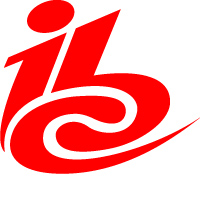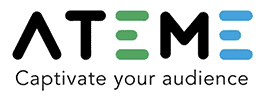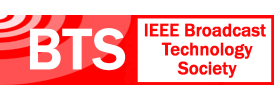- About
- Members
- Sponsors
- Subcommittees
- Technical Documents
- News
- Events
- Spotlight ATSC 3.0
- Contact Us
- Member Login
- Member Meetings
- Advanced Search
Search Site
Member Links
- About
- Members
- Sponsors
- Subcommittees
- Technical Documents
- News
- Events
- Spotlight ATSC 3.0
- Contact Us
- Member Login
- Member Meetings
- Advanced Search
IBC REWIND: Focus on IP Ecosystem Plays to ATSC 3.0’s Strengths
Posted on October 5, 2016 in ATSC News
 From futuristic technology demonstrations to insightful panel presentations, ATSC leaders from the United States and around the world took Amsterdam by storm at IBC 2016. Growing worldwide interest in developing an Internet Protocol (IP) ecosystem for digital TV broadcasting is in our wheelhouse with ATSC 3.0 being the world’s first IP-based broadcast standard.
From futuristic technology demonstrations to insightful panel presentations, ATSC leaders from the United States and around the world took Amsterdam by storm at IBC 2016. Growing worldwide interest in developing an Internet Protocol (IP) ecosystem for digital TV broadcasting is in our wheelhouse with ATSC 3.0 being the world’s first IP-based broadcast standard.
In the IBC Future Zone, ATSC Members ETRI and Technicolor demonstrated how ATSC 3.0’s layered-division multiplexing and scalable coding deliver 4K Ultra HD programming and mobile services. ATSC member NERC joined forces with China’s Shanghai Jiao Tong University to demonstrate an ATSC 3.0 uplink return channel for interactive applications such as IOT (Internet of Things) connectivity.
The well-attended “Global Landscape for Broadcast TV Systems” session was chaired by ATSC luminaries Rich Chernock, Triveni Digital, United States, and Yiyan Wu, CRC, Canada. This session, conducted in cooperation with FoBTV (the global “Future of Broadcast Television initiative), featured a series of interesting ATSC 3.0-related presentations:
- Jon Montalban Sanchez, University of Basque Country, Spain spoke about ATSC 3.0 technologies for zoned advertisements and insertion of local content.
- Seonguk Jeong, Deputy Director, Ministry of Science, ICT and Future Planning (MSIP), Republic of Korea explained South Korea’s aggressive ATSC 3.0 rollout plans.
- Mark Aitken, Sinclair Broadcast Group, United States, highlighted the importance of the bootstrap in ATSC 3.0.
- Phil Laven, recently retired chairman of DVB, Switzerland, and Gerard Faria, TeamCast, France, also spoke.
After these informative technical presentations, the session looked at the challenges, competition and strategies in a wide-ranging debate and a lively audience Q&A session, with opinions from leading industry figures from three continents, including: Anne Schelle, ATSC/Pearl TV, United States; Peter Siebert, DVB, Switzerland; Yajun Kou, NERC-DTV, China; Kenichi Murayama, NHK STRL, Japan; and Lynn Claudy, FoBTV/NAB, United States.
The ATSC was well-represented throughout the three-day conference with ATSC Board Chairman Richard Friedel and ATSC President Mark Richer and fellow ATSC board members Glenn Reitmeier of NBC Universal, Craig Todd of Dolby Laboratories, Brian Markwalter of the Consumer Technology Association, Lynn Claudy of the National Association of Broadcasters, and Anne Schelle of Pearl TV. ATSC volunteer leaders evangelizing about ATSC 3.0 in Amsterdam included Technicolor’s Alan Stein and LG’s Madeleine Noland, as well as the aforementioned Chernock and Wu.
Posted in ATSC News
News Categories
News Archives
Subscribe
Subscribe to The Standard, our monthly newsletter. Learn More
Join ATSC
ATSC is a membership organization with both voting and observer categories. Voting members include corporations, nonprofit organizations, and government entities, and they participate actively in the work of ATSC. Observers are individuals or entities not eligible to be a voting member.
Subscribe to our Newsletter
Subscribe to The Standard, our monthly newsletter, to stay up-to-date with ATSC news and events around the world.
Site Links
Contact Us
ATSC
1300 I Street NW, Suite 400E
Washington, DC 20005 USA
Do you have questions about ATSC?
About ATSC
ATSC, the Broadcast Standards Association, is an international, non-profit organization developing voluntary standards and recommended practices for digital terrestrial broadcasting. Serving as an essential force in the broadcasting industry, ATSC guides the seamless integration of broadcast and telecom standards to drive the industry forward. Currently, the ATSC 3.0 Standard is providing the best possible solution for expanding the potential of the broadcast spectrum beyond its traditional application to meet changing needs. From conventional television to innovative digital data services, ATSC has one clear goal: to empower the broadcasting ecosystem like never before.
© 2025 ATSC





































